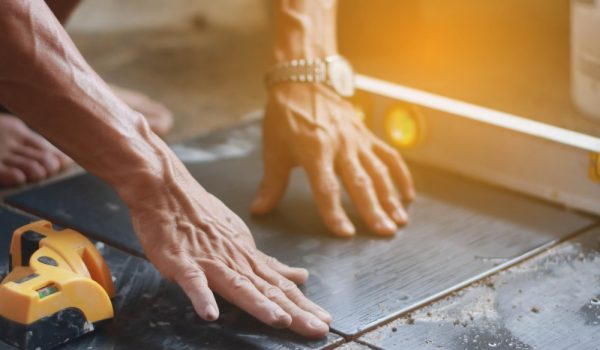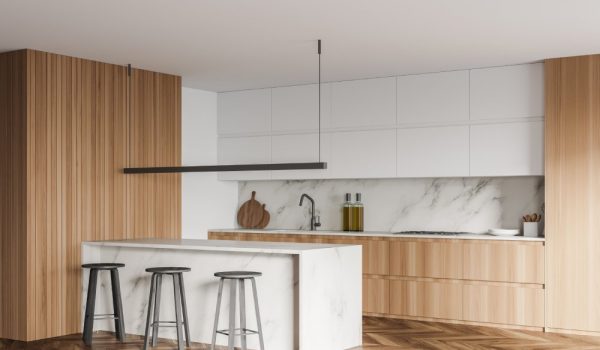Are you looking for durable and stylish tile flooring for your Texas home? Learn everything you need to know about porcelain tile flooring, including its benefits, installation process, and maintenance tips.
Were you ever wowed by the natural stone-like bathroom flooring at one of your friend’s houses or a star-rated hotel? Chances are it was porcelain tile. Because of their greater water-resistant properties, porcelain tiles are increasing in popularity. And they aren’t limited to bathrooms. You’ll find them increasingly deployed in the kitchen, living room, bedroom, and so on.
If you’re considering installing porcelain tile in Texas this guide is for you. Here we will explain everything you need to know about porcelain tile flooring.
What are porcelain tiles?
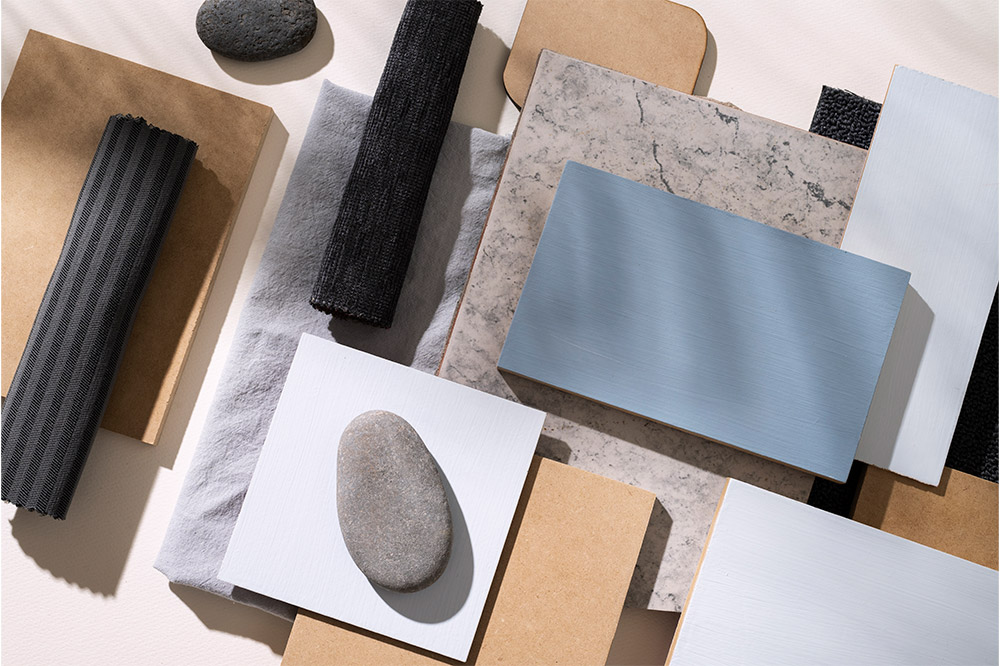
Porcelain tiles are flooring tiles made from ceramic material. These are known for being denser and more porous than regular tiles and hence preferred in settings like bathrooms and kitchens.
There are two types of porcelain tiles, namely:
Through-bodied
This type of tile is made from a single material with uniform color throughout the surface. There isn’t any glaze coating that can wear off. The main advantage of through-bodied porcelain tiles is they can disguise scratches and chips easily.
Glazed
Glazed types contain a glaze coating on the surface, giving them a shiny look. The benefits include a wide range of color and design choices and superior strength.
These tiles are thought to have originated in China in the 15th century since they were used in the Porcelain Tower of Nanjing. The tiles were then imported to Europe and eventually to the rest of the world. Modern production methods have made it affordable for most households.
Porcelain tiles are sometimes known as porcelain vitrified tiles or ceramic tiles. The term ‘vitrified’ refers to the fact that they are a mix of clay and silica. The mixture, which, when heated at high temperature, results in a unique texture with a shiny surface.
Porcelain vs. Ceramic Tiles
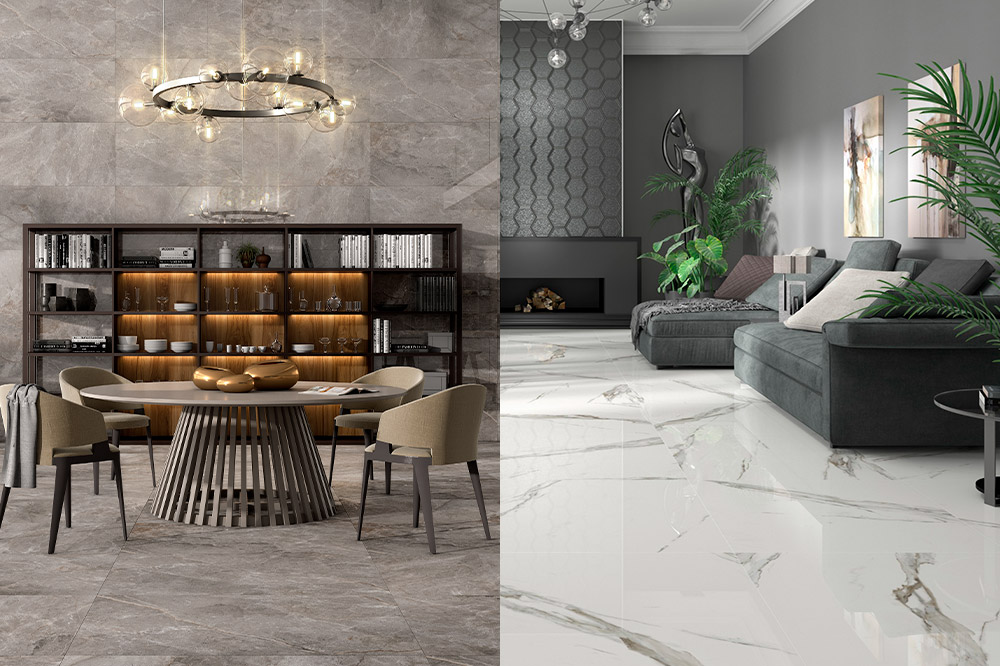
Many times, people will use porcelain tiles and ceramic tiles interchangeably. But there’s a subtle, yet significant, difference between the two.
Porcelain and ceramic tiles are part of a larger category of tiles that can be generalized as ceramic tiles. But the difference lies in their preparation process, water absorption rate, and density.
Per the Tile Council of North America, the difference between ceramic and porcelain tiles is determined by their water absorption criteria. Porcelain has a water absorption rate of 0.5%, while ceramic tiles have more than 0.5%.
Porcelain tiles are made from a specialized clay known as kaolin clay mixture. This is finer and purer than the clay used to prepare ceramic tiles, which is coarse clay.
Because of these differences, porcelain tiles are dense and more porous than their ceramic counterparts. Also, they tend to cost a bit more.
Advantages of Porcelain Tiles
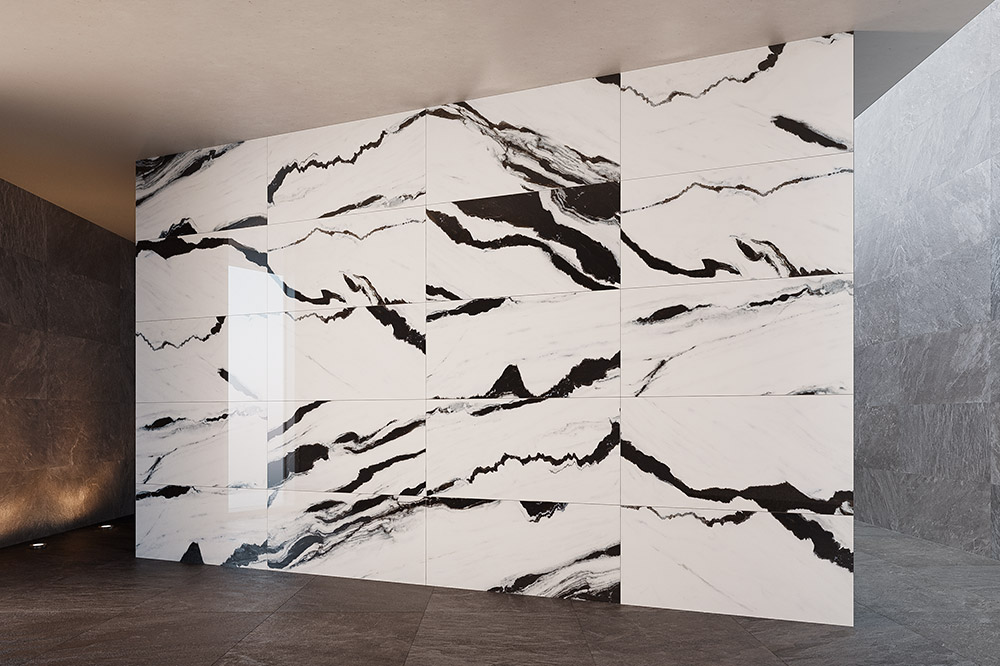
Porcelain tiles are popular because of many of their unique properties. These properties grant them a unique set of advantages that benefit consumers. If you’re looking for flooring types, perhaps you already know about some of the benefits of using porcelain tiles for the floor. Well, here are some of the advantages of installing porcelain tiles:
Better water and heat resistance
The main reason porcelain tiles are installed in high moisture areas like bathrooms and the kitchen is their superior water resistance capabilities. Since they have less than 0.5% water absorption rate, they repel moisture and withstand long-wet conditions. Besides water resistance, porcelain material has superior resistance to heat as well. Thus, they’re also installed for countertop surfaces.
More durable
Porcelain tiles are more durable and can last for decades with minimal wear and tear. Therefore, you’ll also find them installed in high foot traffic areas. Because of the clay used in the manufacturing process (kaolin clay), these tiles are less susceptible to cracks. So you can install them outdoors as well.
Lower maintenance
With porcelain tiles, there’s no need to babysit or take care of the tiles very often. Since they’re tough and resistant to moisture, there’s less likelihood of cracks and damage. Compared to ceramic tiles, porcelain is less prone to breakage during winter. But porcelain is more brittle. And hence proper care must be taken.
Simple to clean
Keeping porcelain tiles clean and shiny isn’t going to be a chore. Because they’re less porous, liquid substances don’t penetrate deep into the tiles and create stains or mildew. Thus, they’re easy to clean simply with a few wipes. Even in high-traffic areas, janitors find porcelain tiles easy to clean and maintain.
Wide range of designs to choose from
Traditionally, porcelain tiles were limited in design and color range. But with the availability of glazed variants and modern manufacturing techniques, you have more options than ever. You have more colors, pattern, and finish to select from for your flooring.
Disadvantages of Porcelain Tiles

While porcelain tiles have grown in popularity recently, they are not without disadvantages. Before investing in these tiles, you should know what you might miss.
Difficult to install
One of the major drawbacks of porcelain tiles is that they’re difficult to install. The main reason is that they’re denser and difficult to work with. Since it’s harder, you’ll have difficulty cutting through and making the right designs. On top of that, the tiles also tend to be bulkier. So you’d need specialized help if you were to install them at your home. And consequently, the installation charges are going to be more.
Tad more expensive
You’d have to rethink using porcelain tiles for floors if you’re on a tight budget. They cost a bit more than ceramic tiles in general. Although the cost is not outrageously higher, you’d have to shell out more money per square foot. And the more surface you’d have to cover, the higher the overall price. The cost of these tiles is around $5 to $26 per square foot. And add $10 to $25 per square foot more as installation charges.
Difficult to repair
While porcelain tiles are less prone to damage, they’re not invincible. As already mentioned, the tiles are brittle. So they’ll suffer cracks or dents at some stage. And when they do, they’re difficult to repair simply because they’re difficult to work with.
When investing in porcelain tiles, you should thoroughly weigh the pros and cons.
Things to Consider When Buying Porcelain Tile
For the most part, the benefits of porcelain tiles outnumber of disadvantages. That’s why more and more people are installing them in their homes and offices. Before you buy, however, here are a few things to consider:
- What’s the main purpose of installing tiles?
Porcelain tiles work best when you need moisture resistance, durability, and the look of wood. If that’s the case, go for these tiles. - What PEI ratings do I need?
PEI or Porcelain Enamel Institute rating is a grading system for porcelain tiles that determines suitability as per foot traffic. PEI 0 tiles are wall tiles designed for no foot traffic, while PEI 5 tiles are meant for heavy foot traffic. Every other rating falls in between. - What’s my budget?
Since porcelain tiles are more expensive than ceramic, are you well-prepared to cover the cost? Do you have the capital for installation and repair costs in the future? Take all of these things into consideration. - The dealer
There are several porcelain tile dealers in McAllen. And the price varies from dealer to dealer. You must request quotes from each dealer before finalizing the project
Install porcelain tile flooring in Texas
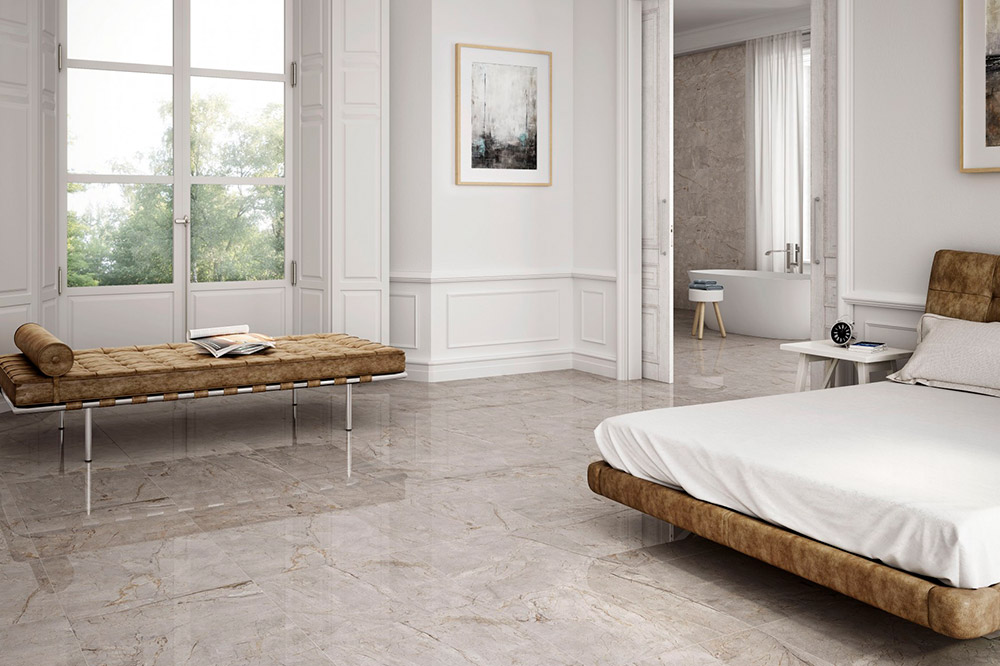
Porcelain tile flooring is an excellent investment for most households in Texas. If you want to increase your home’s resale value or provide a better living environment for your family, you must go for these tiles. Contact us today to learn more.





